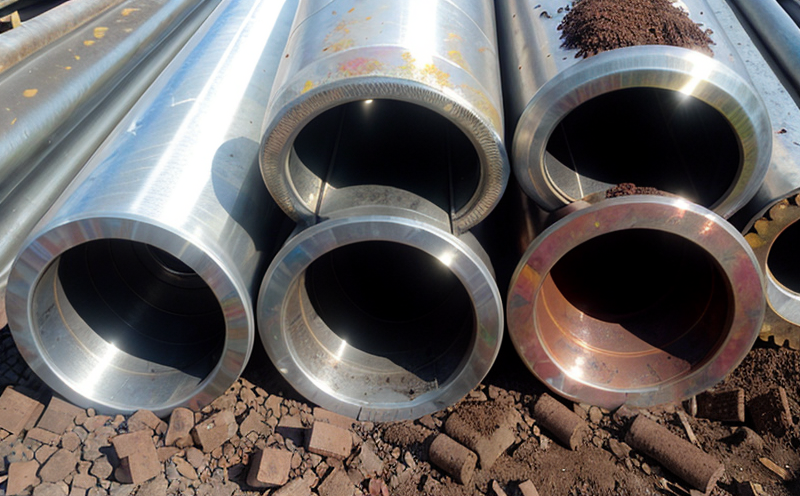Toy Surface Contact Chemical Safety Evaluation
The toy surface contact chemical safety evaluation is a critical service designed to ensure that toys and other children’s products comply with international safety regulations, particularly regarding the chemicals present on their surfaces. This test evaluates whether the materials used in toy production are safe for direct skin contact or oral ingestion by children. The focus of this service lies on identifying potential hazards from chemical compounds such as heavy metals, phthalates, and other harmful substances that could leach into a child's environment.
Children often put toys directly in their mouths during playtime, making it essential to assess the safety of all materials used. This evaluation ensures that companies can confidently market products without fear of recalls or legal action due to non-compliance with relevant standards like ASTM F963-21 and EN 71.
The process involves extracting any potentially hazardous chemicals from the toy surface using various solvents, followed by thorough analysis through techniques such as Inductively Coupled Plasma Mass Spectrometry (ICP-MS) or Gas Chromatography-Mass Spectrometry (GC-MS). By doing so, manufacturers gain valuable insights into their product's safety profile and can make necessary adjustments to avoid harmful exposures.
Our team of experts uses cutting-edge equipment tailored specifically for this type of analysis. We employ experienced chemists who understand both the technical aspects and regulatory requirements associated with toy testing. Their expertise allows us to provide accurate results that meet or exceed industry standards.
Scope and Methodology
The scope of our toy surface contact chemical safety evaluation includes a comprehensive examination of the materials used in toy manufacturing, focusing on those parts that come into direct contact with children. This encompasses plastics, paints, coatings, adhesives, and any other components that could potentially release harmful chemicals.
The methodology employed involves several key steps:
- Sample Preparation: Each sample is carefully prepared according to ISO 14609 guidelines to ensure consistent results. This includes cleaning the samples thoroughly before extraction.
- Extraction Process: Extractants are chosen based on their ability to effectively dissolve target compounds without causing degradation of the material itself. Common solvents include methanol and acetone.
- Analysis Techniques: Once extracted, the solutions undergo detailed analysis using advanced analytical methods like ICP-MS for metal quantification or GC-MS for volatile organic compounds (VOCs).
- Reporting Results: Comprehensive reports are generated detailing findings and compliance status against relevant standards. These documents serve as valuable resources for manufacturers seeking to ensure product safety.
This rigorous approach ensures accurate identification of all potentially harmful chemicals present on toy surfaces, providing peace of mind for companies committed to delivering safe products.
Why Choose This Test
- Ensure compliance with international standards such as ASTM F963-21 and EN 71.
- Identify and eliminate potential sources of chemical hazards in toy production processes.
- Provide detailed reports that help manufacturers understand their product's safety profile fully.
- Gain competitive advantage by demonstrating commitment to high-quality, safe products.
- Avoid costly recalls and reputational damage caused by non-compliant products.
- Access expert knowledge from our team of seasoned chemists specializing in toy testing.
- Ease regulatory burden through efficient compliance solutions tailored specifically for the toy industry.
Selecting this test is an investment in your company’s reputation and future success. It ensures that you are not only meeting current regulations but also preparing yourself for future changes in legislation.
Use Cases and Application Examples
| Use Case | Description |
|---|---|
| Educational Toys | Assessing the safety of learning aids like alphabet blocks or number cubes to ensure they do not contain harmful substances. |
| Dollhouses and Accessories | Checking whether dolls' hair, clothing, or accessories pose any risks when placed in a child's mouth. |
| Plastic Toys | Ensuring that toys made from PVC or other plastics do not release phthalates into the environment. |
| Metallic Components | Evaluating toy vehicles, construction sets, and other items containing non-ferrous metals for any leaching issues. |
| Soft Toys | Checking soft plush toys for any chemical residues that could be harmful to young children. |
| Solid Objects | Assessing the safety of hard objects like puzzles or building blocks that might come into contact with a child's skin during play. |
| Interactive Toys | Evaluating toys equipped with batteries or electronic components for their overall safety from both a chemical and electrical perspective. |
These examples illustrate how our toy surface contact chemical safety evaluation applies across various types of children's products. By conducting this test early in the design process, manufacturers can identify potential issues before they become costly problems later on.





